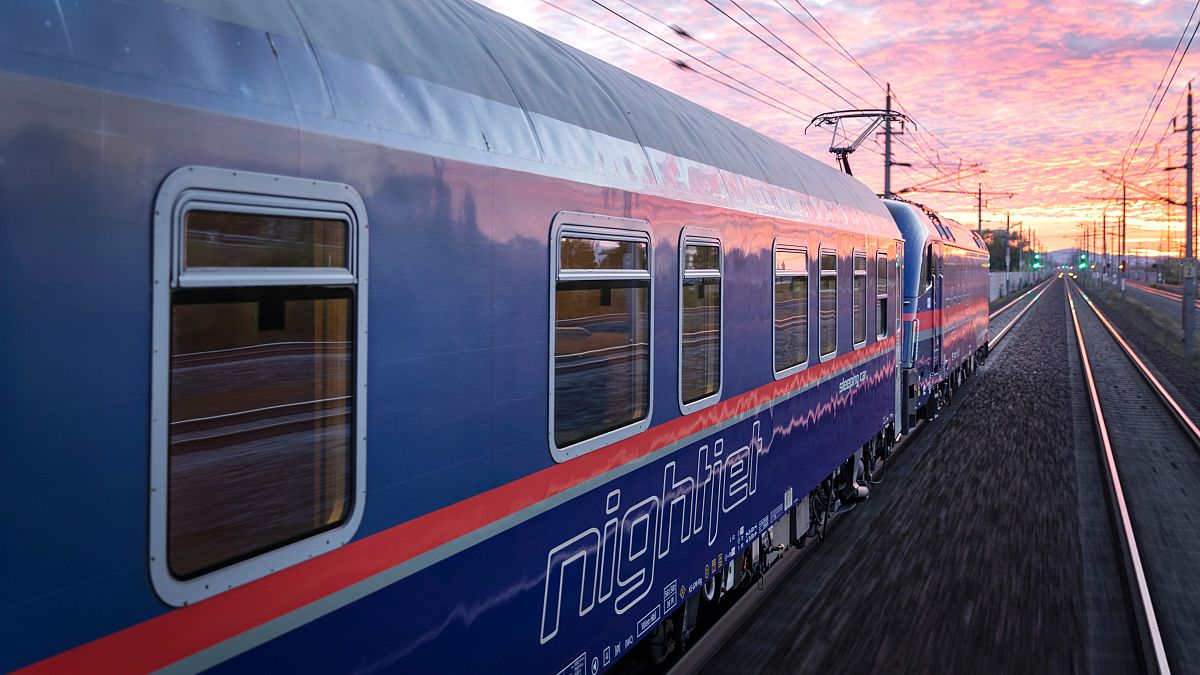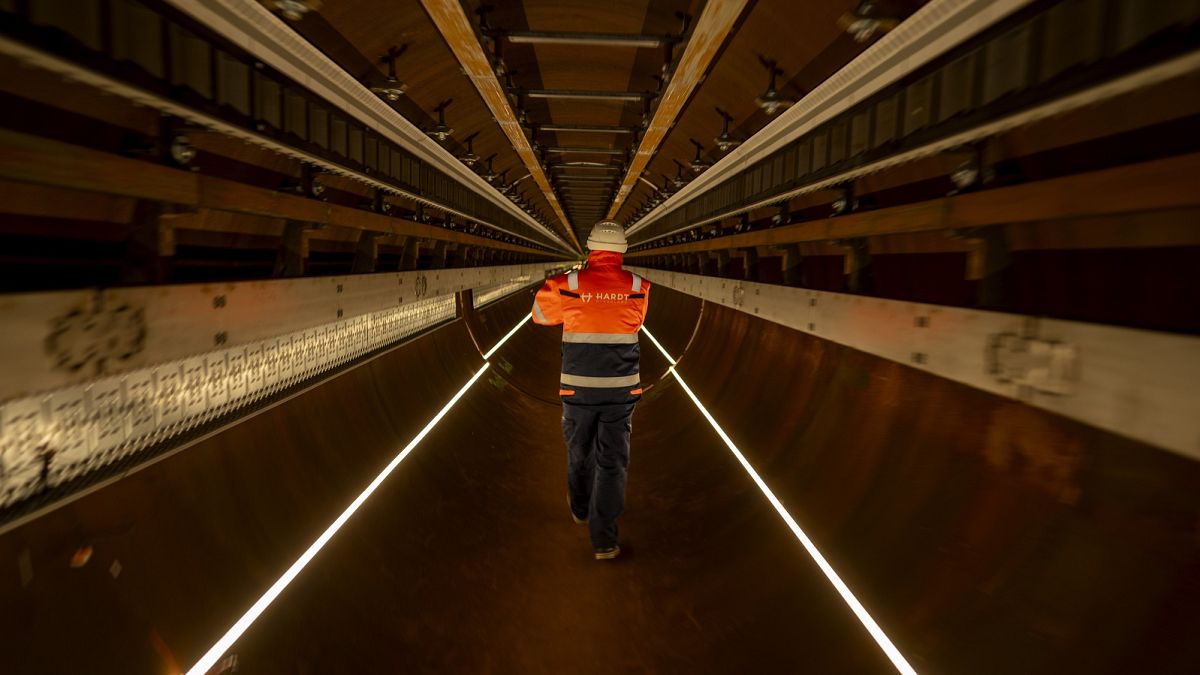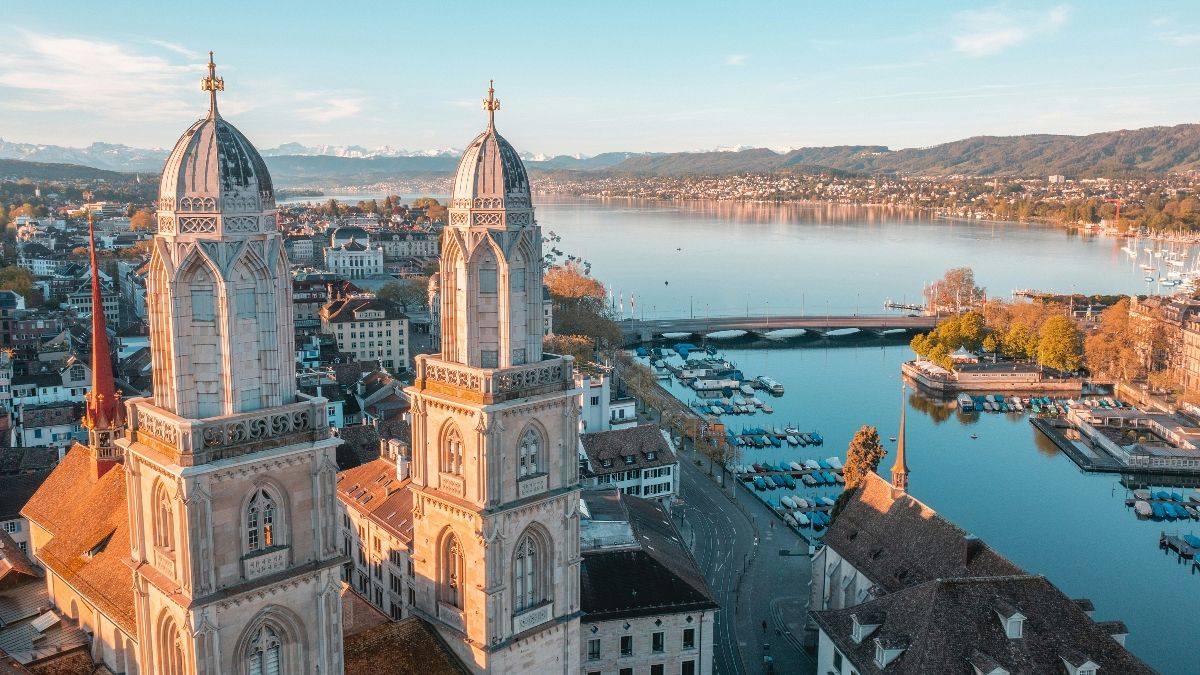Visiting Brazil? Don’t miss these 9 stunning natural wonders

Brazil is bursting with spectacular national parks and jaw-dropping landscapes which are home to some of the world’s rarest and most endangered species.
A world-famous carnival, glorious beaches, legendary football players and beautiful, friendly people. Brazil’s reputation precedes itself, with millions of tourists every year choosing to visit the country for their dream holiday.
This year, Brazil has seen tourism pick up to pre-pandemic levels, Jacqueline Gil, Marketing Director of Visit Brazil tells Euronews Travel, with many coming from Latin America and Europe.
Most visit for all the reasons mentioned above – but are then stunned by the natural beauty of one of the most biodiverse countries in the world.
“Brazil is – or has been – mostly promoting itself for its sunny beaches, but we are now focusing on nature tourism too,” Gil says. “That includes the Amazon, of course, and our many natural parks.”
The Amazon rainforest – home to more than three million species – is a common destination for nature lovers. But there are many other places in Brazil that are bound to leave travellers completely in awe of nature’s artistry.
The South American nation is also focusing on boosting local communities in “culturally-driven small towns that can offer something very authentic,” Gil says. “Every region is very diverse,” Gil says. “I would suggest going and exploring.”
Here are seven of the best natural wonders to visit in Brazil.
9. Chapada dos Veadeiros
This beautiful national park, which features charming waterfalls and pristine lakes, can be found in the state of Goiás, in central-west Brazil. It was recognised as a national park in 1961 and became a UNESCO World Heritage Site in 2001.
Once in Chapada dos Veadeiros, travellers should pay attention to the park’s rock formations, which are among the oldest ones on the planet. There’s also the opportunity to spot some amazing wildlife, including marsh deer, maned wolves, jaguars, tapirs, toucans and vultures.
Some of the animals in Chapada dos Veadeiros are extremely rare or at risk of extinction, so this is a sacred place for them.
8. Serra Dos Órgãos
Serra Dos Órgãos gives its name to both a national park and the rugged mountain range within it, which is shaped in a way that recalls a church’s organ.
These mountains and its forests are bursting with exotic birds and colourful tropical plants, which makes the experience of hiking in the national parks ever full of surprises.
The park is in Rio de Janeiro, making it the perfect nature getaway if you’re visiting Rio.
7. Lençóis Maranhenses
This national park on the north-eastern coast of Brazil is not the easiest to reach, but it’s definitely worth the effort. Its huge white sand dunes, in contrast with the rain-made light blue lagoons, combine for an incredible, otherworldly view – and great pictures.
The best time to visit is in July, when the lagoons are sparkling blue – or green! – and more inviting to swim in. Go barefoot, walk along the dunes, and take a dip for an unforgettable experience.
6. Iguazu Falls
At the border between Argentina and Brazil, the beautiful Iguazu Falls are not as famous as Niagara Falls, but they’re perhaps even more stunning.
This cascading water body is bursting with wildlife, including rare, endangered species. Travellers are likely to spot howler monkeys, toucans, jaguars and pampas deer – as well as many exotic birds.
5. Cachoeira de Fumaça
Cachoeira de Fumaça – or ‘smoke falls’ – is a 340m waterfall in the northeastern state of Bahia that’s best enjoyed during the rainy season, when the water comes crashing down on the pool below.
A visit would involve a nice hike up the falls to see the water cascading down – rewarded by the incredible view from the top. Or a three-day hike to the bottom, after which travellers can swim in the waterfall’s pool.
4. Pantanal
Travellers cannot miss a visit to the world’s largest wetlands, Pantanal.
Spanning over 200,000 square metres and covering parts of Brazil as well as Paraguay and Bolivia, Pantanal is home to some of our planet’s most curious creatures. These include capybaras, jaguars, caimans, macaws, howler monkeys, giant anteaters and giant otters.
While the Amazon gets more attention, Pantanal is also one of the most biodiverse places on our planet, and in dire need of all the support and protection it can get. Less than 2 per cent of the wetland is federally protected.
3. Poço Encantado
Poço Encantado – which literally translates into the ‘enchanted well’ – is a water-filled cavern in the Chapada Diamantina National Park of Andarai.
It turns into a magical spectacle when the sunlight hits the water directly, making the rock formations deep underwater shine through. Photographers should wait for the right time of the day to snap the perfect show of the cave’s eerie blue glow.
2. Poço Azul
Poço Azul, near the small town of Riachão in the northeastern region of Brazil, is very similar to Poço Encantado – a wonderful cave with intense blue water hidden in the dry landscape of Bahia.
Compared to Poço Encantado, Poço Azul has the added perk that you can swim and float in its clear blue waters, observing its marvellous cave.
1. Encontro das Aguas
Encontro das Aguas – literally ‘meeting of waters’ – is a well-known destination in Manaus, the capital of the Amazonas state, and it’s truly a sight to behold.
For as long as 6 kilometres, two rivers – the Rio Negro and the Solimoes River – flow side by side without mixing, creating two parallel flows of black-coloured and lighter, sandy-coloured water.
The rivers run at different speeds and with different temperatures – and yet they don’t mix until way down the line. A day cruise on the Rio Negro takes travellers to the meeting point and gives them a front-row view of this bizarre show.
What’s the best way to travel around Brazil?
Tourists should know that Brazil is a vast country – the fifth largest in the world – and you have to travel quite a bit around its territory to discover all its wonders.
Slow, sustainable travel is the best way to approach these destinations – making sure that visitors’ impact on the local environment is minimal.
According to Freixo, tourism can actually help Brazil finance some of its sustainability and rewilding campaigns; visitors going into reservations help to fund the country’s conservation programmes.
Though flying across the country is the fastest way to move between places that can be hundreds of kilometres apart, choose a bus or train where possible to reduce your carbon footprint.
Source: Euro News














